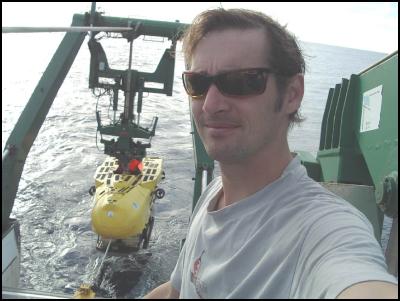Methane-Eating Bug Holds Promise
A methane-consuming microorganism that lives in geothermal areas in Rotorua has attracted international attention for its ability to live in extremely acidic conditions.
Discovered by researchers at GNS Science, the bacterium could one day be used to reduce methane gas emissions from landfills. It could also help to cut methane emissions from geothermal power stations.

The science journal Nature has just published a paper on the microorganism, which was discovered in soil at Tikitere geothermal field, also known as Hell’s Gate, near Rotorua.
Climate researchers are expected to follow the discovery closely as the bacterium offers the potential to reduce the amount of methane entering the atmosphere. Methane is a far more potent greenhouse gas than carbon dioxide.
The hardy bacterium is part of a group known as methanotrophs, but this one is able to live in hotter and much more acidic conditions than its relatives.
Methanotrophs use methane as their only source of energy. They live mostly in soils and are especially common in environments where methane is produced.
Microbiologist at GNS Science, Matthew Stott, said it was a particularly exciting discovery as it had international significance.
“We knew methane was being produced geothermally at Hell’s Gate and we were puzzled as to why it wasn’t reaching the surface,” Dr Stott said.
“What we have found is an extremely tough methane-consuming organism that is new to science. It grows happily under extremely acidic conditions in the lab.”
Globally, acidic environments such as marshes and peat bogs generate significant quantities of methane. Scientists have always suspected that a proportion of this methane was being consumed by bacteria living in these environments.
“Our discovery has demonstrated that methane-consuming organisms do live in highly acidic environments. Without them, the amount of methane entering the atmosphere would be much greater.
“Ultimately, it may be possible to implant this organism, or a similar one, in landfills and cut methane emissions into the atmosphere.”
Fellow microbiologist at GNS Science, Peter Dunfield, who isolated the bacterium, has tentatively named it Methylokorus infernorum, which is a latinised description of its methane food source, the ‘hellish’ location of its discovery, and also a description of a structure within its cell that resembles a Koru.
GNS Science worked with colleagues at the University of Hawaii to sequence the genome of the bacterium. They found its genetic makeup was different to all known methanotrophic organisms.
The discovery stems from a collaboration between GNS Science and the owner and operator of Hell’s Gate, Tikitere Trust. The agreement between the two organisations includes the sharing of any benefits that might accrue from scientific discoveries.
Spokesman for Tikitere Trust, Jim Gray, said the discovery had the potential to put New Zealand and Tikitere Trust at the leading edge of extremophile science internationally.
“The Trust sees this is an exciting development that has both commercial and scientific implications for New Zealand.“
ENDS


 Financial Markets Authority: FMA Seeks Clarity From High Court On Use Of Eligible Investor Certificates In Wholesale Investment Sector
Financial Markets Authority: FMA Seeks Clarity From High Court On Use Of Eligible Investor Certificates In Wholesale Investment Sector Scion: Scion’s Novel Internship Model Connects Talent With Industry
Scion: Scion’s Novel Internship Model Connects Talent With Industry Financial Markets Authority: Westpac Admits To Misleading Representations That Resulted In $6.35m In Overcharges
Financial Markets Authority: Westpac Admits To Misleading Representations That Resulted In $6.35m In Overcharges Bill Bennett: Download Weekly - Review Of 2024
Bill Bennett: Download Weekly - Review Of 2024 Bill Bennett: One NZ scores worldwide first as Starlink direct-to-mobile launches
Bill Bennett: One NZ scores worldwide first as Starlink direct-to-mobile launches Hugh Grant: How To Reduce Network Bottlenecks
Hugh Grant: How To Reduce Network Bottlenecks



